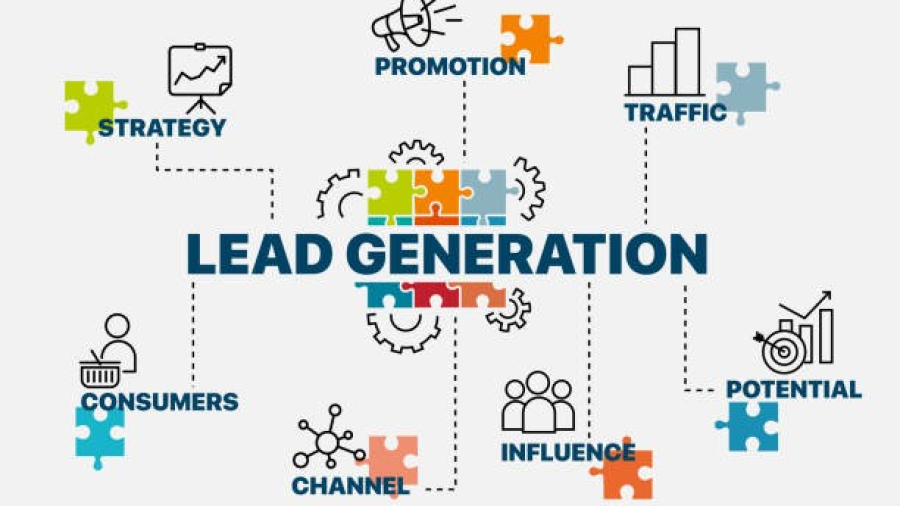In today’s fast-paced, highly competitive business environment, companies constantly search for ways to expand their customer base, increase sales, and grow revenue. A critical element in achieving this is lead generation. But before delving into lead generation, it is essential to understand what a lead is.
In this comprehensive blog, we’ll discuss what a lead is, what lead generation entails, and explore some of the most effective lead generation strategies that can propel your business forward.
What is a Lead?
In the simplest terms, a lead is any individual or organization that expresses interest in a company’s product or service. Leads are potential customers who have shown some level of engagement, such as filling out a form, signing up for a newsletter, or interacting with a company through various touchpoints. These leads are not yet customers, but they represent an opportunity for businesses to convert them into paying customers.
A lead can take many forms, such as:
- Marketing Qualified Lead (MQL): These leads have engaged with marketing content but are not ready to receive a direct sales pitch. They’ve perhaps downloaded an eBook, signed up for a webinar, or subscribed to a newsletter.
- Sales Qualified Lead (SQL): These leads have shown clear intent to purchase. They may have requested a demo, reached out for a quote, or directly contacted the sales team.
Understanding where your lead is in their journey will help you tailor your approach and improve the chances of converting them into a customer.
What is Lead Generation?
Lead generation refers to the process of attracting and capturing the interest of potential customers (leads) and nurturing them to a point where they’re ready to make a purchasing decision. In a broader sense, it is all about building a list of prospective buyers who have demonstrated interest in your product or service.
Lead generation is the first step in building a strong sales pipeline. The primary objective is to bring leads into the sales funnel and gradually move them down through various stages until they’re ready to purchase. Without leads, there would be no sales opportunities, which means no revenue.
The Importance of Lead Generation
Lead generation is a fundamental element in the business world because:
- Business Growth: Generating a steady flow of leads is essential for scaling a business. The more leads you have, the greater your chances of closing sales and driving revenue.
- Targeted Marketing: Lead generation enables businesses to reach their specific target audience. It helps focus resources on individuals or companies most likely to benefit from the product or service.
- Higher Conversion Rates: By nurturing leads and guiding them through the sales funnel, businesses can increase their conversion rates. A well-qualified lead is more likely to convert into a customer.
- Building Relationships: Lead generation is not just about making a sale; it’s about developing relationships. Nurturing leads and providing value throughout their journey strengthens trust and loyalty, which can lead to long-term customer relationships.
Lead Generation Strategies: How to Get Quality Leads
Now that we understand what a lead is and why lead generation is important, let’s explore some of the most effective lead generation strategies. In today’s digital era, lead generation goes beyond traditional marketing techniques. Modern businesses leverage a combination of online and offline strategies to capture leads. Below are several tried-and-tested lead generation strategies to help boost your sales pipeline.
1. Content Marketing
Content marketing is one of the most powerful and organic ways to generate leads. By creating valuable, informative, and engaging content, you can attract potential leads and convert them into customers. Whether it’s through blog posts, infographics, eBooks, whitepapers, or case studies, providing educational content that solves your audience’s problems positions your business as a thought leader.
For instance, a well-written blog post on a topic relevant to your industry can attract a lot of traffic. If you place a lead capture form or call-to-action (CTA) strategically within the content, you can encourage readers to submit their contact information in exchange for more valuable resources.
Tips for Effective Content Marketing:
- Identify the pain points of your target audience and create content that offers solutions.
- Optimize content for search engines (SEO) to increase its visibility.
- Include lead magnets, such as downloadable content, that require users to provide their information.
2. Search Engine Optimization (SEO)
SEO is a crucial component of content marketing and lead generation. It is the process of optimizing your website and content to rank higher in search engine results, making it easier for potential leads to discover your brand. When your website ranks on the first page of Google, it generates more organic traffic, which leads to more potential customers.
By targeting relevant keywords that your target audience is searching for, you can attract high-quality leads to your site. For example, if you sell project management software, you might want to rank for terms like “best project management software” or “how to manage projects effectively.”
SEO Tips:
- Conduct thorough keyword research to identify the phrases your target audience is searching for.
- Optimize your website for on-page SEO factors like title tags, meta descriptions, and image alt text.
- Build backlinks from reputable websites to improve domain authority.
3. Social Media Marketing
Social media is a powerful platform for lead generation. With billions of active users on platforms like Facebook, Instagram, LinkedIn, and Twitter, businesses have an unparalleled opportunity to engage with potential leads. Social media allows you to showcase your brand, share valuable content, and communicate directly with your audience.
To effectively generate leads through social media, you should use:
- Paid ads: Platforms like Facebook and LinkedIn allow you to run highly targeted ads based on demographics, interests, and behavior.
- Organic posts: Share informative content, case studies, or testimonials to attract potential leads.
- Lead forms: Some social media platforms offer in-app lead capture forms, making it easy for users to submit their information.
4. Email Marketing
Email marketing remains one of the most effective and direct ways to nurture leads and convert them into customers. By providing valuable content, product updates, and personalized offers directly to a lead’s inbox, you can establish a connection and build trust.
Lead generation through email marketing typically starts with capturing emails through a lead magnet, such as a downloadable guide or newsletter sign-up. Once you have the email address, you can nurture the lead through a series of automated email campaigns designed to educate and move them further down the sales funnel.
Email Marketing Tips:
- Segment your email list to send personalized messages based on lead behavior or preferences.
- Use engaging subject lines to improve open rates.
- Include clear and compelling CTAs in your emails to drive conversions.
5. Pay-Per-Click (PPC) Advertising
PPC advertising is an effective way to generate leads quickly. It involves paying for ads that appear at the top of search engine results pages (SERPs) or on other platforms like social media and display networks. Google Ads and Facebook Ads are two of the most popular platforms for running PPC campaigns.
PPC ads are highly targeted, allowing you to reach users based on specific keywords, demographics, and interests. When a potential lead clicks on your ad, they are directed to a landing page designed to capture their information.
PPC Tips:
- Set clear goals for your PPC campaigns, such as lead generation or increased website traffic.
- Use highly relevant keywords to attract qualified leads.
- Continuously optimize your ad copy and landing pages to improve conversion rates.
6. Webinars and Virtual Events
Webinars and virtual events have become increasingly popular lead generation tools, especially in the B2B space. Hosting a webinar on a topic that resonates with your audience allows you to showcase your expertise while providing value to attendees.
Leads who sign up for your webinar are already interested in your product or service, making them more qualified. Plus, webinars offer a great opportunity to engage with your leads in real-time, answer their questions, and demonstrate how your offering can solve their problems.
7. Referral Programs
Referral programs leverage your existing customers to bring in new leads. By incentivizing your customers to refer others to your business, you can tap into their networks and generate high-quality leads. Word-of-mouth referrals tend to be more trusted and lead to higher conversion rates.
For example, offering discounts, free trials, or rewards to customers who refer others can boost your lead generation efforts significantly.
8. Influencer Marketing
Influencer marketing involves partnering with individuals who have a large following and influence over your target audience. These influencers can promote your products or services to their audience, driving traffic and generating leads. This strategy works well because consumers trust recommendations from people they admire.
To succeed with influencer marketing, it’s crucial to choose influencers whose audience aligns with your target demographic.
Measuring Lead Generation Success
After implementing lead generation strategies, it’s important to track and measure the success of your efforts. Here are some key metrics to monitor:
- Conversion rate: The percentage of leads that convert into paying customers.
- Cost per lead (CPL): The amount you spend to acquire a new lead.
- Lead quality: Are the leads you’re generating high-quality and likely to convert?
- Return on investment (ROI): How much revenue are you generating in comparison to the amount spent on lead generation efforts?
By analyzing these metrics, you can refine your lead generation strategies and allocate resources to the channels that bring the best results.
Conclusion
Lead generation is the lifeblood of any business looking to grow and thrive in today’s competitive market. Whether you’re a startup or an established company, generating high-quality leads should be a top priority. By leveraging a combination of content marketing, SEO, social media marketing, email marketing, PPC advertising, and other strategies, you can build a robust lead generation system that fuels your sales pipeline.
Remember, lead generation is not just about quantity; it’s about quality. Nurturing your leads and guiding them through the buyer’s journey will result in stronger relationships, higher conversion rates, and, ultimately, more sales for your business.

